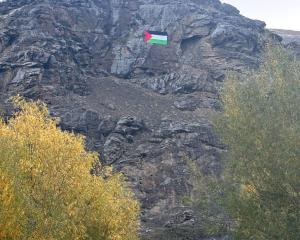The claim is made in a report supporting the area on the true right bank of the Clutha River being made a Category 1 historic place on Heritage New Zealand's list.
The proposal is open for submissions until April 12. Most of the tailings on that side of the river are within a historic reserve, covering 165.5ha.
The report, prepared by by Marion Sutton and Heather Bauchop, said the landscape showed the massive scale of gold dredging undertaken in the 19th and 20th centuries.
"The Earnscleugh tailings have outstanding historic, technological and archaeological significance, representing the evolution of mining [and specifically dredging] and its associated technologies from the early 1860s through to the 1960s,'' they said.
"The scale of the dredging was enormous - these are huge machines, churning through the river gravels, [which] transformed the flat into an eerie landscape of tailings, a huge snail trail of gravels marking the path of the dredges.''
As gold became more difficult to extract, technologies developed to allow miners to work new areas or to rework old areas in different ways, the report said.
Dredges were a particularly significant development and one where New Zealand led the world.
The dredging industry had a significant effect on the social and economic fortune of Alexandra, the report said.
From the mid-1890s and into the early years of the 20th century, the gold dredging industry was at its peak and much of the Alexandra population at that time would have been connected in some way with the industry.
The tailings were relatively intact, compared with tailings elsewhere on the river, which had in places been damaged, destroyed or modified.
They reflected a range of alluvial gold mining technologies and were accessible to the public by way of a walking track.
"Amongst engineers, opinion has been expressed that gold dredging was New Zealand's greatest engineering achievement, and Otago, for a time, was the leading world centre of design and construction,'' the report said.
Central Otago's dry climate meant the tailings were unlikely to become covered by vegetation.
Heritage New Zealand Otago/Southland manager Jonathan Howard said after submissions closed, the proposal and submissions would be considered by the organisation's board at its next meeting.
If the Earnscleugh tailings were entered on the New Zealand Heritage List, the organisation would then recommend to the Central Otago District Council the existing extent of protection given to the tailings be amended and upgraded when the district plan was revised.











